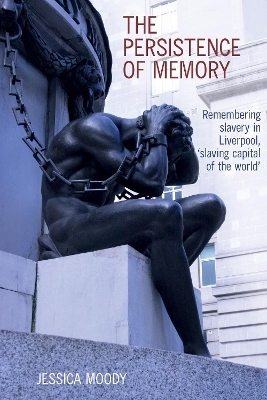
The persistence of memory
Liverpool University Press (Verlag)
978-1-80034-828-8 (ISBN)
The Persistence of Memory is a history of the public memory of transatlantic slavery in the largest slave-trading port city in Europe, from the end of the 18th century into the 21st century; from history to memory. Mapping this public memory over more than two centuries reveals the ways in which dissonant pasts, rather than being ‘forgotten histories’, persist over time as a contested public debate. This public memory, intimately intertwined with constructions of ‘place’ and ‘identity’, has been shaped by legacies of transatlantic slavery itself, as well as other events, contexts and phenomena along its trajectory, revealing the ways in which current narratives and debate around difficult histories have histories of their own. By the 21st century, Liverpool, once the ‘slaving capital of the world’, had more permanent and long-lasting memory work relating to transatlantic slavery than any other British city. The long history of how Liverpool, home to Britain’s oldest continuous black presence, has publicly ‘remembered’ its own slaving past, how this has changed over time and why, is of central significance and relevance to current and ongoing efforts to face contested histories, particularly those surrounding race, slavery and empire.
Jessica Moody is a Lecturer in Public History at University of Bristol
List of Illustrations
Acknowledgements
List of Abbreviations
Introduction: Remembering Slavery in the ‘Slaving Capital of the World’
Slavery, Memory, Public History
The Persistence of Dissonant Memory
Recovering Memory across a Longue Durée: methodology and book structure
1: From History to Memory: The Discursive Legacies of the Past
Introduction
Liverpool, ‘slaving capital of the world’
From History to Memory
Scouse Boasting, an Enterprising Sprit and The Competition
‘The Glory and the Shame’
Overcoming Abolition
The Memorial Debate of Liverpool and Slavery
Conclusion
2. Black Liverpool: Living with the Legacy of the Past
Introduction
Exceptional Legacies: the Liverpool black presence in the eighteenth and nineteenth century
Racism, Riot and Resistance: living with the legacy of the past
Guerrilla Public History: Education and Activism
Conclusion
3. Coinciding Anniversaries: Birthdays and the Abolition Act in 1907, 1957 and 2007
Introduction
1907: Performing Civic Patriotism and Celebrating the Slave Trade
1957: Racism, Decolonisation, and Abolition
2007: Birthdays and Bicentenaries
Conclusion
4. The ‘Cult’ of William Roscoe: Remembering Abolition
Introduction
Liverpool and Abolition
The Cult of William Roscoe
Conclusion
5. The Rise of the Museums
Introduction
The Transatlantic Slavery Gallery
The International Slavery Museum
Conclusion
6. Performing Memory: Local slavery memory in a globalizing world
Introduction
Whose Apology? Local Apology, Global Audience
Slavery Remembrance Day
Conclusion
7. Sites of Memory: Bodies and the Cityscape
Introduction
Buying and Selling: Myth, Place, and Layering
Graves and Ghosts
Bodies in Stone
Conclusion
Bibliography
Periodicals
Archival Material
Published Guidebooks
Histories of Liverpool
Other Primary Texts and Sources
Secondary Works
Websites and Online Resources
| Erscheinungsdatum | 16.09.2020 |
|---|---|
| Reihe/Serie | Liverpool Studies in International Slavery ; 18 |
| Zusatzinfo | 10 Halftones, black and white |
| Verlagsort | Liverpool |
| Sprache | englisch |
| Maße | 156 x 234 mm |
| Themenwelt | Kunst / Musik / Theater |
| Geisteswissenschaften ► Geschichte ► Hilfswissenschaften | |
| Geschichte ► Teilgebiete der Geschichte ► Kulturgeschichte | |
| ISBN-10 | 1-80034-828-2 / 1800348282 |
| ISBN-13 | 978-1-80034-828-8 / 9781800348288 |
| Zustand | Neuware |
| Haben Sie eine Frage zum Produkt? |
aus dem Bereich


